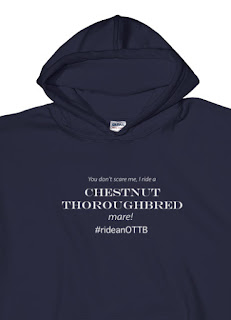 |
| "Ophelia," 7 x 5 oil sketch from April 2019 Thirty Horses, Thirty Days |
I've painted a lot of chestnuts this year. "Soar," with Gryphon; the painting I shared in my last post, "Eye Spy;" one of the featured February Foals, "High Hopes." Chestnuts took up their share in Thirty Horses Thirty Days, and my recently-completed commission (which I have yet to reveal) included a chestnut mare.
When I paint a chestnut, I don't always use the same palette of colours. Not all chestnuts are created equal! 😉 I thought over the next few weeks it might be fun to look at some of the colour combinations I used in the above paintings.
 |
| First step: the (very imperfect) burnt umber sketch. |
For the Thirty Days paintings, in most cases I used my go-to limited palette: burnt umber, cadmium red, yellow ochre, ultramarine blue, and titanium white.
 |
| Basically working dark to light. |
- Draw the form on the canvas with burnt umber.
- Block in some mid-dark tones with burnt umber and cadmium red (burnt umber is technically a yellow, so that gives you an orangey colour! Because some chestnuts are really orange, not red, right?).
- Move to a lighter midtone of yellow ochre, cadmium red, and burnt umber.
- Place in the darkest darks by adding ultramarine blue to the mid-dark mixture.
- Place in the lights by adding titanium white to the midtone mixture.
- Put in white markings and highlights.
Easy, right? 😀
The finished sketch is at the top of the post, so you can see what refinement went on from the one immediately above.
Next week we'll look at something more complex!


No comments:
Post a Comment